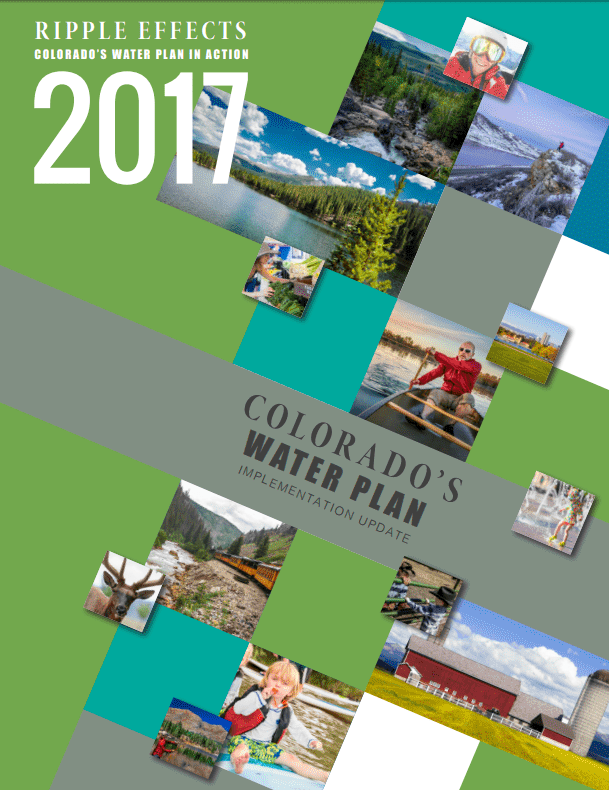By Larry Morandi
 Colorado’s Water Plan is now more than two years old. While most of its goals may not be fully achieved until 2030 or 2050, it makes sense to assess the short-term results to gauge progress and see where adjustments might be appropriate to achieve the plan’s overall objectives. To that end, the Colorado Water Conservation Board (CWCB)—which prepared the plan in 2015 in response to Governor John Hickenlooper’s executive order two years earlier—published an update in November entitled Ripple Effects: Colorado’s Water Plan in Action 2017.
Colorado’s Water Plan is now more than two years old. While most of its goals may not be fully achieved until 2030 or 2050, it makes sense to assess the short-term results to gauge progress and see where adjustments might be appropriate to achieve the plan’s overall objectives. To that end, the Colorado Water Conservation Board (CWCB)—which prepared the plan in 2015 in response to Governor John Hickenlooper’s executive order two years earlier—published an update in November entitled Ripple Effects: Colorado’s Water Plan in Action 2017.
The CWCB report takes eight measurable objectives contained in the plan and presents an implementation status for each. The measurable objectives address: (A) Supply-Demand Gap; (B) Conservation; (C) Land Use; (D) Agriculture; (E) Storage; (F) Watershed Health, Environment and Recreation; (G) Funding; and (H) Education, Outreach and Innovation. For example, the supply-demand gap objective is to reduce a projected 2050 municipal and industrial gap of 560,000 acre-feet to zero acre-feet in 2030; CWCB grants for projects from the existing Water Supply Reserve Fund and a newly created water plan implementation grant program have cut into that gap by 48,000 acre-feet in the last two years.
The report also cites progress in meeting the water plan’s other objectives. Although advances in storage projects are the most apparent—with the proposed Gross Reservoir Expansion, Northern Integrated Supply and Windy Gap Firming projects accounting for over 200,000 acre-feet of new storage—planning for these projects began well before Colorado’s Water Plan was adopted and they have access to dedicated state and local funding sources. Colorado’s Water Plan supports additional storage, both in surface water reservoirs and underground aquifers, but it also recognizes the need to develop sustainable funding sources to achieve all its objectives.
Funding affects all water plan components, especially those nonstructural activities that may lack repayment streams. The state is exploring options to raise $100 million annually beginning in 2020—$3 billion by 2050—which may include a loan repayment guarantee fund and a “green” bond program for environment and recreation, conservation, agriculture, and education and outreach activities. During the 2017 legislative session, the Colorado General Assembly created a new water plan implementation grant program with $10 million for projects and activities to help meet each of the eight objectives. In agriculture, for example, $1 million is set aside to improve irrigation efficiency and develop alternative transfer mechanisms to share 50,000 acre-feet of water with other users; CWCB is currently reviewing eight grant requests totaling $1.6 million that would leverage an additional $26.3 million in matching funds.
The 2017 legislation also added $5 million to the Watershed Restoration Grant Program to help achieve the watershed health, environment and recreation objectives. Over the past two years, that program has supported watershed and stream restoration, flood mitigation and stream management plans.
CWCB has approved nearly $1 million in grants for 19 projects, leveraging an additional $2 million in matching funds.
These are just some of the achievements toward meeting the water plan’s goals to date. Future blog posts will examine the status of specific measureable objectives in more detail. The complete Ripple Effects report is available on CWCB’s website, www.colorado.gov/cowaterplan.


 Print
Print
Reblogged this on Coyote Gulch.